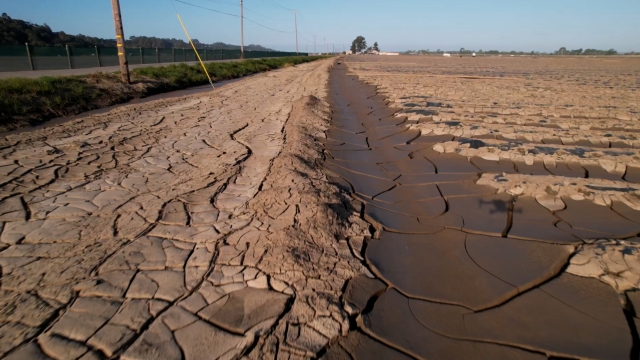Clear skies don’t signal the end of a weather disaster. It’s easy to see that in the small Central California farming town of Pajaro.
In March, a nearby river breached a levee after days of heavy rainfall, leaving much of the small farming town underwater.
“This was a bedroom and there was beds and those were ruined, so this is all ruined,” said Evelia Martinez as she showed damage to a space she rented out to make extra money.
“I am a doer and I can physically do it, but financially, I don’t have the money to do that. I don’t have the money to go buy all the sheetrock and insulation and reinforce all the beams. I don't have that money," Martinez added.
Her most recent tenants were farm workers. Pajaro is an affordable haven for those who do the back-breaking, often minimum-wage work of picking crops.
Many of the workers are undocumented. FEMA is now in the area offering help, but many of those without a social security number, or a child born in the U.S., don’t qualify.
“It’s throughout this whole town that a lot of people are scared if they are undocumented just to speak up, and that’s why the word doesn’t get out, and everyone thinks it just goes back to normal,” Martinez said.
Eloy Ortiz works with local nonprofits that help farm workers, many of whom lost everything they owned in the flooding.
“Organizations have been great about giving out food and clothes and toys, things like that, but none of that will pay the rent here," Ortiz said.
Ortiz worries workers will go elsewhere to make money because of the uncertainty surrounding the climate. The area was dealing with record dry conditions until this year.
“If they leave California, if they leave this area, it’s going to have a huge ripple effect on the rest of the country," Ortiz said.
On many farms around Pajaro, work has been hard to find.
“Right now, we don’t have the berries available," said farmer Poli Yerena.
Strawberries are Yerena’s main crop. He said March is typically the best time of year to sell them, but the recent wet weather has put him a month behind.
California produces roughly 90% of the nation's strawberries. The California Strawberry Commission, which represents growers across the state, said climate issues shouldn’t impact the prices consumers pay.
However, Yerena is expecting to lose at least half his income this year.
Soon, more types of fruit, including blackberries and raspberries, will be in season. Yerena said that's when his strawberry sales typically cool off.
“What we expect with climate change is the extremes. It’s a threat multiplier. It’s making the drys dyer and the wets wetter," said Nancy Faulstich, who leads the nonprofit, Regeneracion. It raises awareness about the impacts of climate change in communities like Pajaro, where resources are limited.
“The attention may go elsewhere in the country, but people are going to be living with this," Faulstich noted.
Soon, flood recovery will turn into another challenge— wildfire season preparation.
“I am always hopeful. I don’t give up easy," Martinez said. "It’s getting very hard not to give up, but I don’t. I love this area, I love this community," Martinez said.
It's a community those in Pajaro say more people should pay attention to so they can get a better understanding of what life is like on the frontlines of climate change in America.
SEE MORE: G-7 vows to step up moves to renewable energy, zero carbon
Trending stories at Scrippsnews.com




